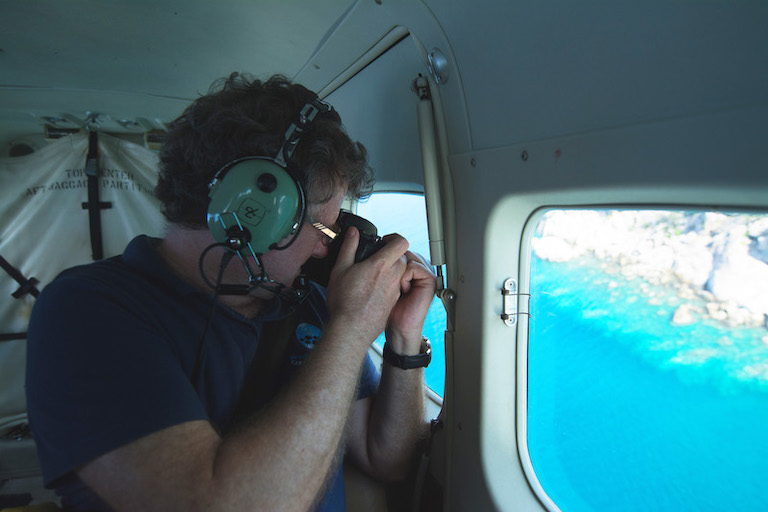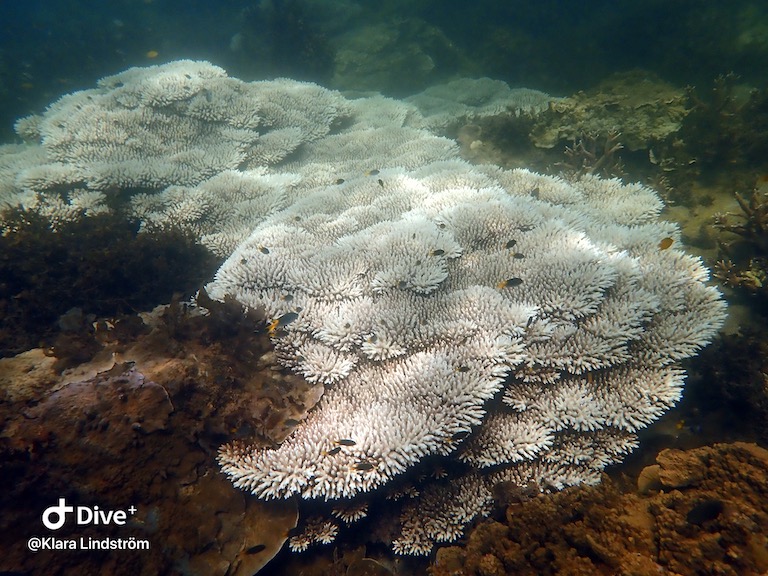- Australia’s Great Barrier Reef just experienced its third major bleaching event in the past five years, which has caused severe and widespread damage.
- The Australian Bureau of Meteorology (BOM) recorded its highest ever sea temperature this past February, which triggered the bleaching.
- The southern part of the reef, which remained relatively untouched during large bleaching events in 2016 and 2017, suffered the most acute damage this time.
- While some corals are able to recover from bleaching, this process can take more than a decade, and scientists fear the Great Barrier Reef won’t recover.
When Terry Hughes peered through the window of a small plane gliding over the Great Barrier Reef in Australia, what he saw troubled him greatly. Instead of healthy reef systems, there was mile upon mile of bleached white coral.
“It’s very confronting to see the scale of the bleaching, and to know that you’re going to lose a lot of corals on the heavily bleached reefs,” Hughes, a professor and director of the ARC Centre of Excellence for Coral Reef Studies at James Cook University, told Mongabay.

This year, the Great Barrier Reef — the world’s largest reef system, spanning more than 344,400 square kilometers (133,000 square miles) — suffered its third major bleaching event in the last five years. Previous ones took place in 2016 and 2017, with the 2016 event considered the most severe. However, this year’s bleaching is proving to be the most extensive, Hughes said.
“We have coastal bleaching this year all the way along the Great Barrier Reef — from the Torres Straits in the north to the southern boundary of the marine park near Bundaberg,” Hughes said. “That’s a distance of more than 2,000 kilometers,” or about 1,250 miles.

Warming water temperatures, induced by climate change, are to blame for this year’s bleaching. The Australian Bureau of Meteorology (BOM) recorded its highest ever sea temperature on the Great Barrier Reef in February.
While 40% of the reef remained untouched, 25% experienced severe bleaching, and 35% was moderately bleached. The southern section of the Great Barrier Reef, which stayed mostly intact during the events of 2016 and 2017, got hit very hard this year.

“Bleaching is the most dramatic on a reef that hasn’t bleached for a decade or longer because there are a lot of corals, and many are the heat-sensitive staghorns and table corals,” Hughes said. “You can see heavily bleached coral from a couple of kilometers away because it glows in the distance.”
Staghorns and table corals play a pivotal role in the marine ecosystem by providing “nooks and crannies” for fish, crustaceans and other animals, Hughes said. Since these corals are more vulnerable species, it might not be possible for them to fully recover, especially if temperatures continue to rise.
However, it is possible for corals to heal.

“Bleaching isn’t necessarily fatal, and it affects some species more than others,” Morgan Pratchett, a professional research fellow at the ARC Centre of Excellence for Coral Reef Studies, said in a statement. “A pale or lightly bleached coral typically regains its colour within a few weeks or months and survives.”
While some color and vitality can return within a few weeks, it can take a decade or longer for corals to fully recover, Hughes said. The corals living in the Great Barrier Reef haven’t been given that much time between major bleaching events.

If the trend continues, the Great Barrier Reef may not have a chance to recover.
“There’s really no time to lose to reduce greenhouse gas emissions and the Australian government is not pulling its weight in that regard,” Hughes said. “The state of Queensland, where the reef is, and the Commonwealth government are still both promoting fossil fuels, new coal mines and more fracking for gas, and that’s a real policy failure in terms of their responsibilities for stewardship of the Great Barrier Reef.”
Banner image caption: An aerial view of bleached coral on the Great Barrier Reef, taken in March 2020. Image by ARC Centre of Excellence for Coral Reef Studies.
